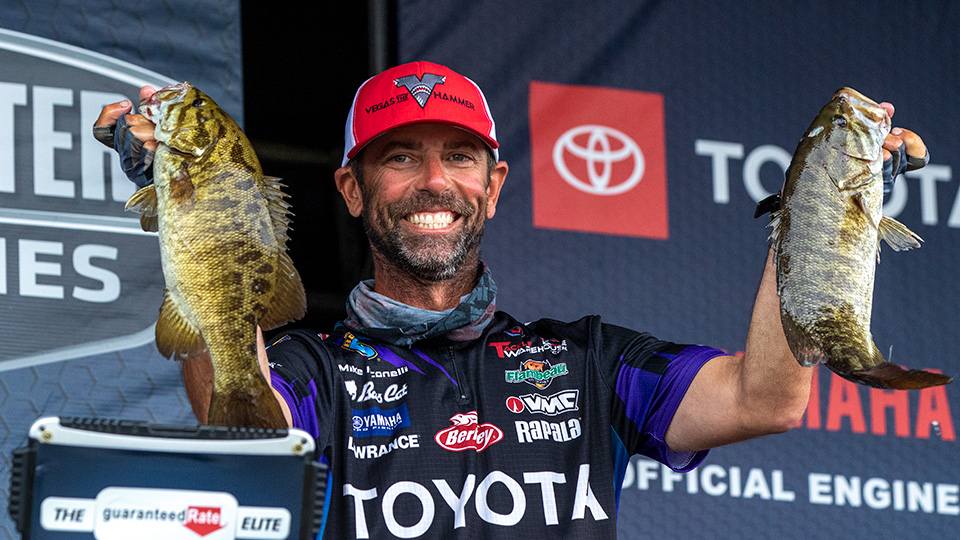
All black bass species rely on the same four senses to keep their bellies full. I’m referring mainly to sight, sound, vibration and smell. A lot of bass anglers assume largemouth and smallmouth use these senses the same way. They don’t.
It’s really important that you know the difference when you’re trying to get a bass to eat an artificial bait.
Largemouth feed primarily by vibration and sound. Smallmouth feed primarily by sight and smell. Those are important distinctions to remember. When I’m picking baits for smallmouth, two things top the list. One, does the bait appeal to a smallmouth’s sense of smell? Two, is the bait’s color realistic and easy to see?
Smell
Berkley has been on the cutting edge of the smell and scent revolution for decades. They started with PowerBait. Then came Gulp! Now they’ve evolved to PowerBait MaxScent. Many other companies have created scented baits and application scents as well.
When I’m smallmouth fishing, I never, never, never ever throw a soft plastic bait that is not scented. It’s that important. Yes, largemouth and the other black bass species use their sense of smell, but not as a primary feeding response like smallmouth do.
I’ve done many taste tests while fishing with friends and even co-anglers where one of us will fish a scented bait and the other a non-scented bait. Whoever is fishing the scented bait typically gets three times as many bites. The right scent can actually draw a smallmouth to the bait.
When I left home for the recent Elite tournament on Lake Oahe, I had two dozen rods in my boat locker rigged with a wide variety of MaxScent baits. They included the Flat Worm, Hit Worm, The General, Lil’ General, Tube and more.
Sight
Smallmouth utilize their eyes more than any other species of bass. They have to see the bait to eat it. I consider three things when I’m picking a lure that will catch a smallmouth’s eye.
The first is color. In clear water you really have to dial in the color of whatever the smallmouth are feeding on. Depending on where and when you’re fishing, that could be things like herring, gobies, crawfish or yellow perch. The cleaner the water, the more closely you’ve got to match the hatch, so to speak.
On the other hand, I often use shock colors to draw bass from a distance. A shock color doesn’t mimic anything in particular, it’s just a bright color that smallmouth can see from far away. Colors like bright chartreuse, bright white, bright orange and bubble gum can create an aggressive response, especially when smallmouth are in groups.
Fishing conditions are number two on my mind. Low early morning and late evening light, and cloudy, rainy conditions tend to be good for largemouth bass. That’s not what you want for smallmouth. You’ll catch more smallies on sunny, slick, calm water. These conditions allow the bass to see your lures better. Some of the best smallmouth days of my life – 30 to 50 fish days – were under those conditions.
My third consideration has to do with speed and rate of fall. I put those hand in hand. Speed is how fast you retrieve a bait. The rate of fall is how fast a lure sinks on a semi-slack line.
Although the best conditions for smallmouth bass are calm and bright sun, the downside is that they are more likely to distinguish that your lure is a fraud. You can use speed and rate of fall to counter that.
With a lot of my smallmouth fishing, I want that bait coming in fast, such as speed cranking, burning a spinnerbait and working a jerkbait or topwater faster than you would with other bass species.
I increase the rate of fall by using heavier weights with drop-shot rigs, tubes, Ned rigs, micro jigs and other sinking lures. The smallmouth don’t get a good look at a bait that sinks fast and attack reflexively.
You can learn more about how I fish for smallmouth and other techniques at www.mikeiaconelli.com or www.youtube.com/c/goingike.





